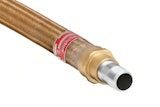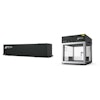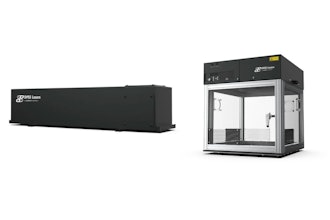This article originally appeared in the November/December print issue of Food Manufacturing.
Today’s supply chains are becoming increasingly complex, creating unique challenges for the food industry. By harnessing the latest technology, food manufacturers can make their supply chains more efficient while improving product quality and safety.
Food manufacturers are processing, packaging, storing and distributing their products in more locations than ever before. And as supply chains become increasingly globalized, processors must focus not only on delivering their finished product on time, but also ensuring the safety and quality of that product throughout the entire supply chain.
The rising complexity of supply chains means that food manufacturers must make an ongoing effort to maintain visibility throughout the process. “The food industry is one of those few industries where achieving real time visibility is not a one-time effort, but a continuous journey,” says Vaidyanathan Shankar, Leader of Supply Chain Consulting and Solutions for Tech Mahindra. “Every time an organization reaches a critical milestone in solving the visibility conundrum, a fresh new initiative to move to the next level crops up.”
Food safety and quality are of particular concern along the supply chain. The threat of food contamination can potentially lurk at any point during the process, from production to packaging to distribution. And quality can easily be compromised by many factors, including shelf life limitations and damaged packaging.
Mike Kuebler, Technical Director and Chief Consultant for Packaging and Distribution Testing for Smithers Pira, says the sustainable packaging — as well as the methods many food companies are using to create a more efficient supply chain — can sometimes result in packaging that is easily damaged. Kuebler says, “These packaging changes need to be balanced with the increasing efficiency of supply chain logistics. In some cases, more efficient movement of goods can sometimes cause unintended damage to the end product.”
Companies that produce frozen products or other items that need to be transported along the cold supply chain face special challenges, including the added cost of providing a third-party logistics (3PL) environment that includes thicker, insulated walls, as well as the cost of generating cold air. The cold supply chain also requires increased handling and more rigorous food safety regulations related to a cold-air environment.
In addition to the unique challenges of delivering a fresh or frozen product, food companies must also deal with the logistical challenges of a global supply chain, such as rising transportation costs and delayed shipments. “The industry needs to find more direct routes to deliver goods in order to avoid high transportation costs and to more sustainably and reliably meet growing demand in countries that are far down the supply chain," says Diane Palmquist, Vice President of Industry Solutions for GT Nexus.
Sourcing a Solution
Food manufacturers looking to create a more visible, efficient supply chain have a variety of options including software, track-and-trace technology, management systems and testing methods. One of the most popular software solutions is cloud technology, which can provide a large amount of data and insights into a company’s global supply chain. With cloud technology, each proprietary system or ERP software is integrated into one network, bringing data from bookings to a single location and assisting in the development of a global logistics plan.
“Cloud technology is a perfect fit for today’s complex food supply chains since everyone can be connected on a single network and there is one accurate set of information. Using cloud technology, food companies can begin to answer critical supply chain questions with certainty,” Palmquist says.
Benefits of using cloud technology include:
- Lead times and costs can be tracked as they occur
- Managers can change production strategies, bring on new suppliers and estimate landed costs based on data from their supply chain network
- Managers are given a better understanding of costs that occur along the supply chain and where to make adjustments to increase product margins
- Transportation can be managed from supplier shipment to customer delivery
Equipment such as machine-to-machine (M2M) devices like radio-frequency identification (RFID) tags, barcode readers and various sensors can also play a vital role in supply chain visibility. Transportation management systems (TMS) can also help optimize shipments for routes, select the proper carrier or truck, provide the ability to build multi-stop or cross-dock based orders and automate the fulfillment process.
Warehouse management systems (WMS) can help make supply chain operations more cost efficient and nimble, according to Kurt Angermeier, Vice President of Marketing for Rytec. “Not only can the WMS ensure that the right product goes out at the right time, but the data it provides can enable analysis to predict product flow into the future, allowing the operation to better plan,” Angermeier says.
For processors in search of better packaging to withstand the rigors of traveling through the supply chain, a range of package testing methods are available. While standard package testing can sometimes uncover package weaknesses, custom protocol development delves into specific, real-life package handling conditions to help determine adjustments that need to be made, either to the package or the supply chain. “The end result [of custom protocol development] is a savings in damage, and package designers and engineers are given the ability to optimize the packaging, potentially saving on overall packaging costs,” Kuebler says.
Supply Chains Are Not One-Size-Fits-All
With so many options, there is no one solution that is right for every company. GT Nexus recommends that food manufacturers ask these questions when looking to implement a new supply chain solution:
- How many suppliers are you working with, and across how many countries?
- What is the likelihood of turnover within the supply chain?
- What is the cost and time needed to get each trading partner up and running on the system?
- Is the system creating a collaborative environment where multiple parties across multiple tiers see one set of data?
- What type of support does the solution provider deliver? Is it able to offer in-country support to suppliers in places like Brazil or India?
- How can end-to-end visibility be achieved to ensure product movement is transparent and product safety is ensured at all times?
Taking the time to consider all operational needs and to explore all available solutions is critical for food processors to choose the right supply chain solution for their processes. Using the latest software and equipment available, manufacturers can look forward to a more efficient, cost-effective supply chain.























